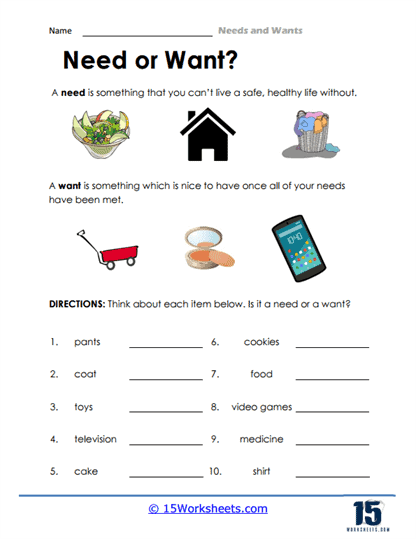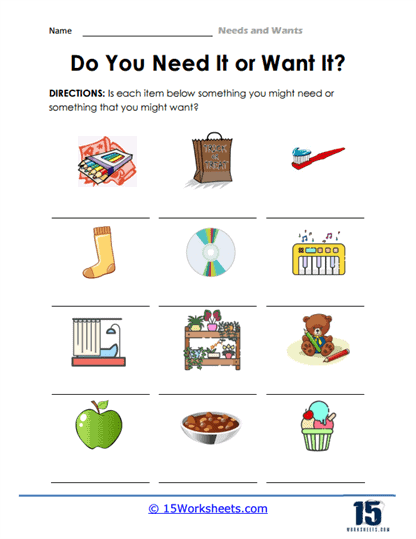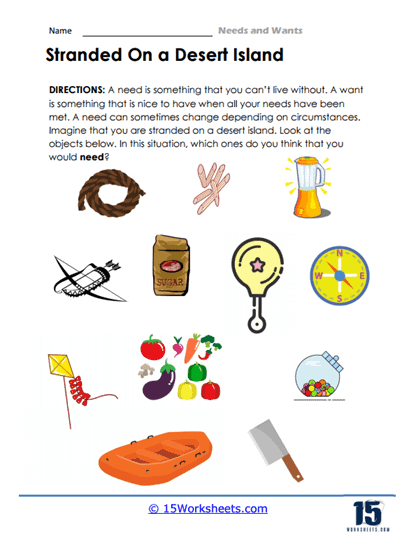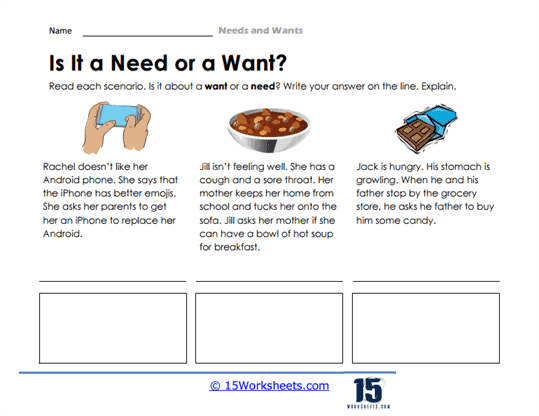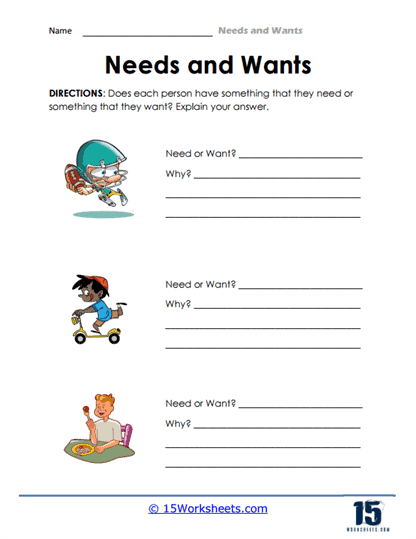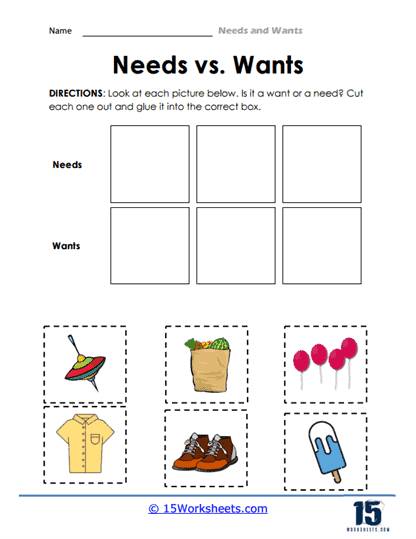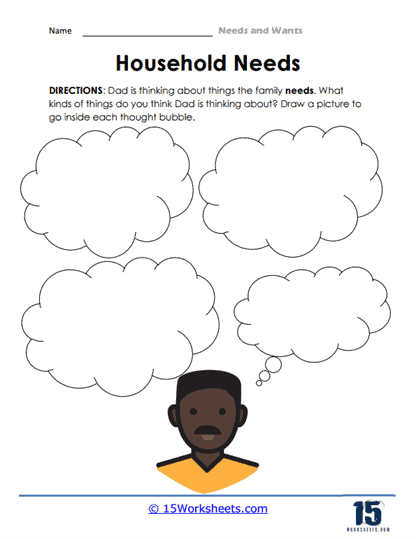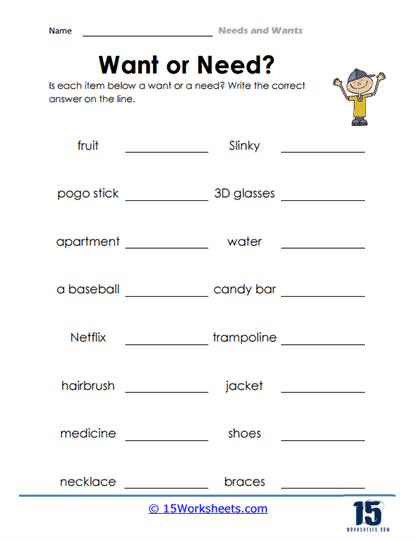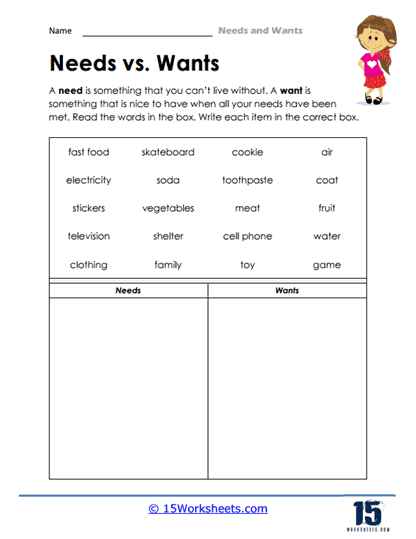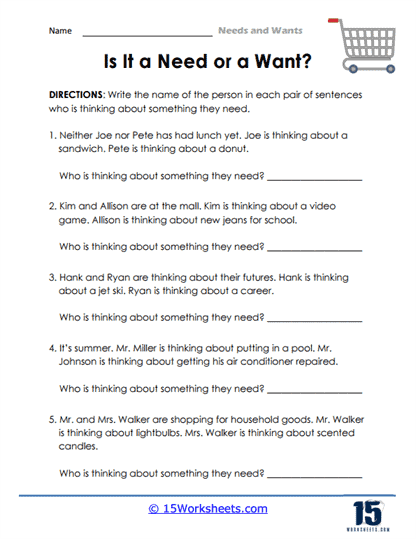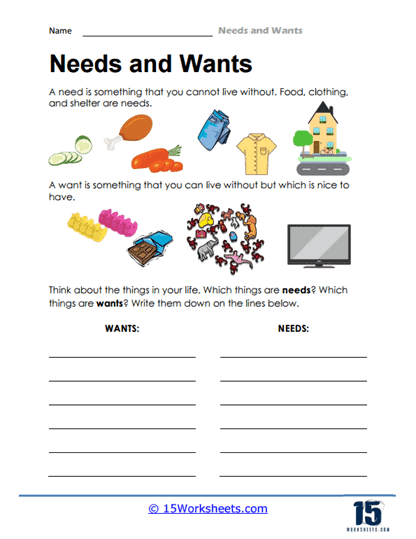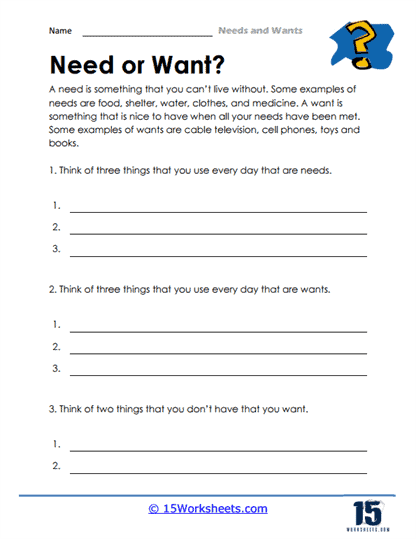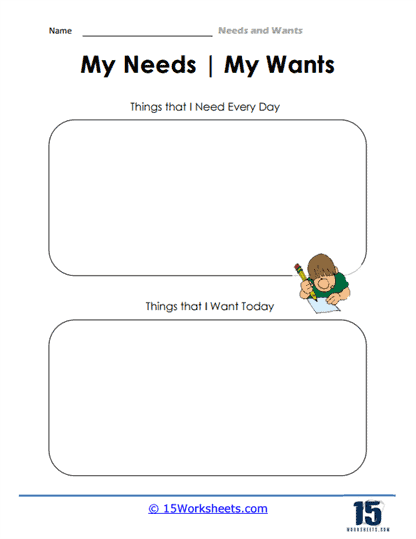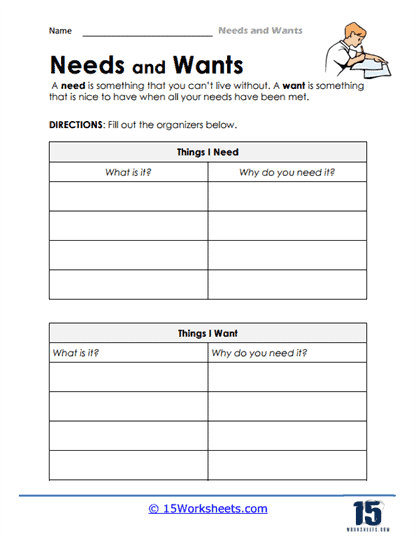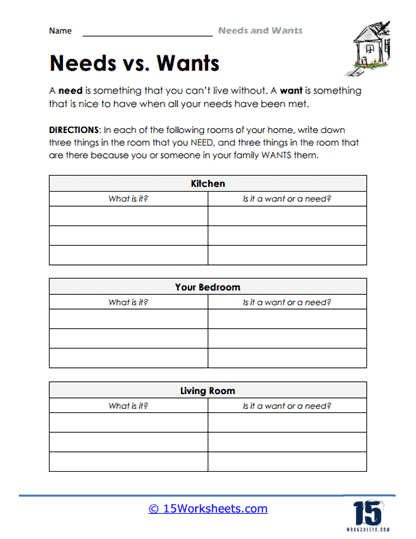Needs and Wants Worksheets
All About These 15 Worksheets
In today’s world, the line between what we need and what we want is often blurred. This confusion can have profound implications, influencing not only our decision-making but also our ability to manage resources effectively, particularly when it comes to finances. That’s where this carefully designed series of 15 worksheets on Needs and Wants comes into play. These worksheets serve as a powerful tool to guide students through the process of distinguishing between the two concepts, helping them cultivate the skills necessary for responsible decision-making, financial literacy, and personal growth.
Understanding the difference between a “need” and a “want” may seem simple on the surface, but in practice, it’s far more complex. Needs are essential for survival-such as food, shelter, clothing, and healthcare. Wants, on the other hand, are the things we desire but can live without. The distinction becomes blurry when our wants feel just as urgent as our needs, often leading to impulsive decisions that can impact our financial well-being and long-term goals. By engaging with these worksheets, students will not only explore the fundamental differences between needs and wants but also gain practical tools to apply these distinctions in their everyday lives.
The worksheets are designed to take students on a journey of self-reflection and critical thinking. As they work through the activities, they are encouraged to explore their own personal needs across various dimensions of life-physical, emotional, and social. They will ask themselves what is truly essential for their well-being. This reflection is crucial in helping students develop a clear understanding of their values and how those values shape their priorities. In an age where consumerism is rampant, being able to discern between what truly adds value to their lives and what is simply a fleeting desire is a key life skill.
In addition to self-reflection, these worksheets push students to consider the broader implications of their wants. While it’s natural to have desires, unchecked wants can sometimes lead to unsustainable behavior, such as overspending or pursuing goals that are out of alignment with personal values. Through guided activities, students will be challenged to think critically about their wants: Where do they come from? How do they impact other areas of their lives? Are these wants helping them grow, or are they distractions from more meaningful pursuits? This type of inquiry builds essential critical thinking skills, enabling students to approach decisions with a clearer, more intentional mindset.
One of the most impactful elements of these worksheets is the emphasis on prioritization. Life is full of competing demands, and the ability to prioritize what truly matters is essential for living a balanced and fulfilling life. By engaging with these exercises, students will learn how to rank their needs in order of importance, recognizing which ones are non-negotiable for their well-being and which ones can take a back seat. This skill is especially important as they grow older and face more complex decisions related to career, relationships, and personal development. Learning to prioritize needs over wants can prevent future stress and help students lead more intentional, satisfying lives.
The worksheets encourage students to take a hard look at impulsive wants-the sudden desires that arise from emotions, peer pressure, or the influence of advertising. These worksheets invite students to pause and ask themselves whether satisfying these impulses aligns with their larger goals and values. This process of reflection teaches delayed gratification, a skill that is key to financial stability and long-term success. In a world of instant gratification, learning to pause and evaluate whether a purchase or decision aligns with one’s bigger picture goals is invaluable.
What Are Needs and Wants?
While a layman may not understand the main differences between the needs and wants of a consumer, a marketeer or a consumer manager will be able to point out all the necessary differences and will know the unique significance of either of the terms.
Differences Between Needs and Wants
Although the two terms are sometimes used interchangeably, they can refer to different consumer requirements.
For instance, consumer needs refer to all those items, services, and products that the consumer is directly dependent on for their survival and health. The consumer’s well-being will be affected if these needs are not met.
On the other hand, consumer wants refer to all those items, services, and products that are part of a consumer’s desires and dreams. If these wants are not met, the consumer’s well-being will not be affected.
Examples of Differences Between Needs and Wants
Some examples that will help you develop a better understanding of the differences between needs and wants are as follows:
Water Versus Wine
Water is said to be the key to existence, without which life is not possible. According to medical research, an average person can only survive three days without consuming any water.
Hence, water is not a living being’s unique desire but is instead one of the basic needs that are required for survival.
On the other hand, while drinking wine may improve a consumer’s quality of life, its absence does not threaten the person’s survival.
Hence, water is an extremely necessary consumer need while wine is a want.
Health Medication Versus Beauty Supplements
People who are struggling with diseases and illnesses are dependent on their prescription medication for their well-being and survival.
For instance, a cancer patient absolutely needs their chemotherapy medication in order to fight against their life-threatening disease.
On the other hand, if someone consumes vitamin or beauty supplements to strengthen and improve the quality of their skin and hair, they do this out of a desire to look beautiful.
Hence, health medication is a need, while beauty supplements are a consumer want that the person can live without.
Clothes Versus Designer Outfits
As human beings, one of our most basic needs is to be clothed. However, if someone prefers to wear expensive luxury outfits, it is part of their wants and not their needs.
Basic Food Versus Junk Food
Just like water, living beings also need proper nutrition for survival and to lead a healthy life. Hence, food sources like grains, rice, vegetables, etc., are part of a consumer’s needs.
On the other hand, if a person chooses to survive on junk food such as burgers, pizza, pasta, etc., it is their unique desire and wants.

